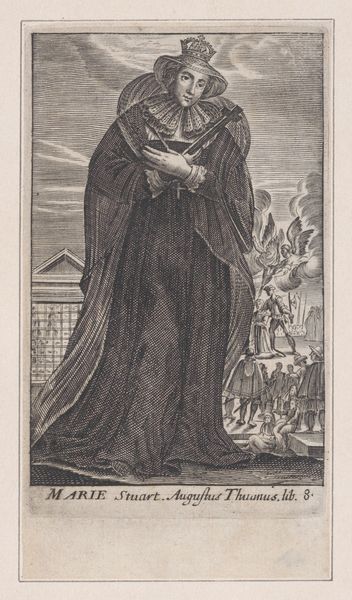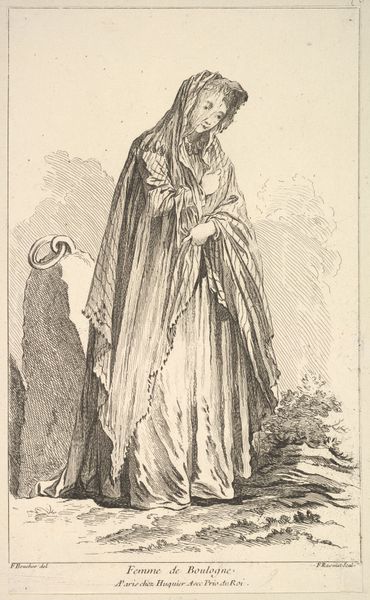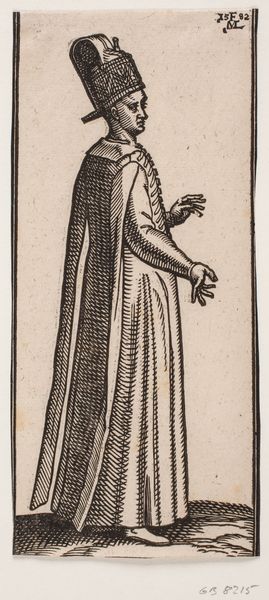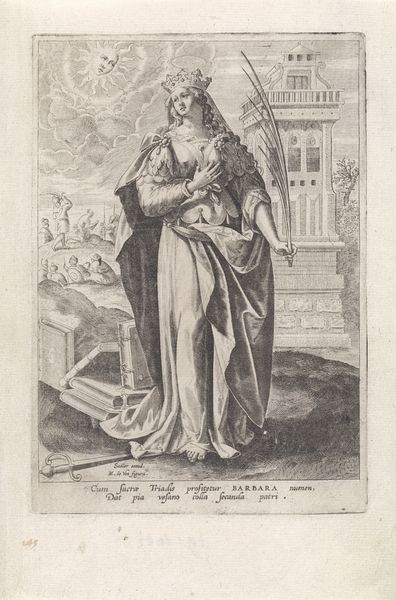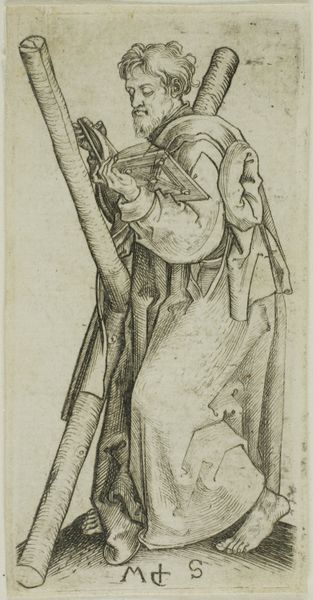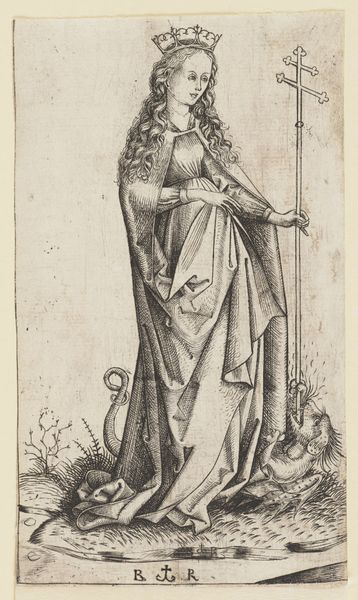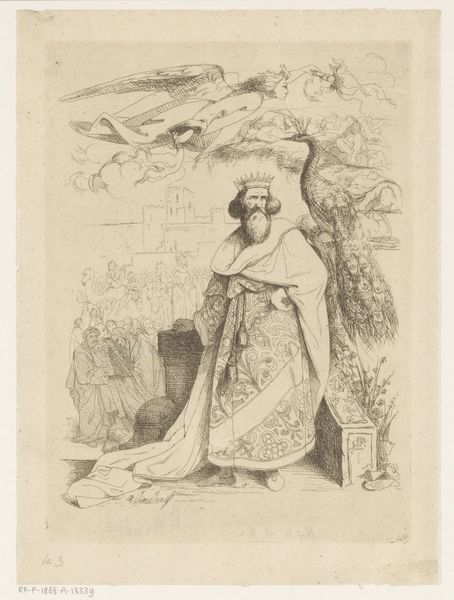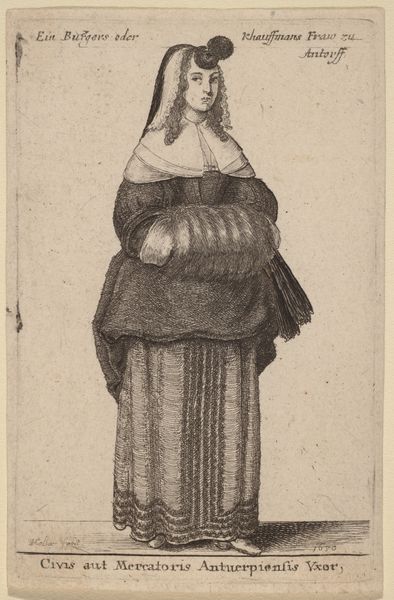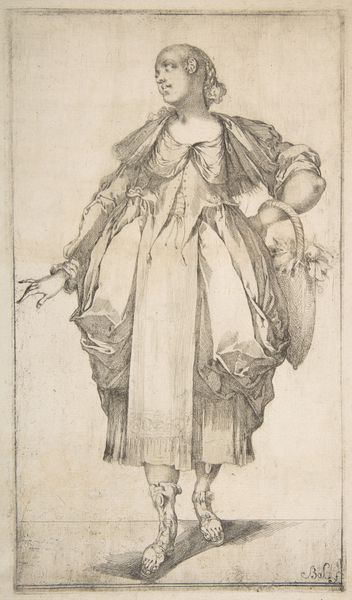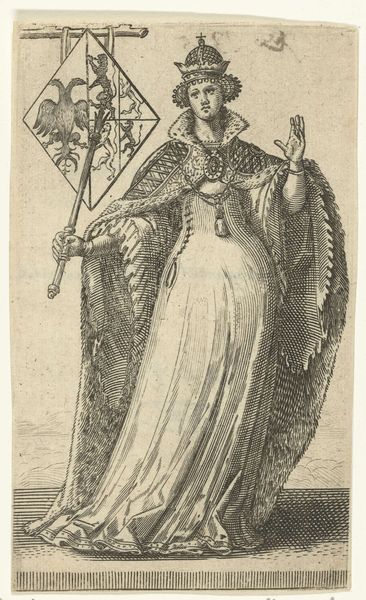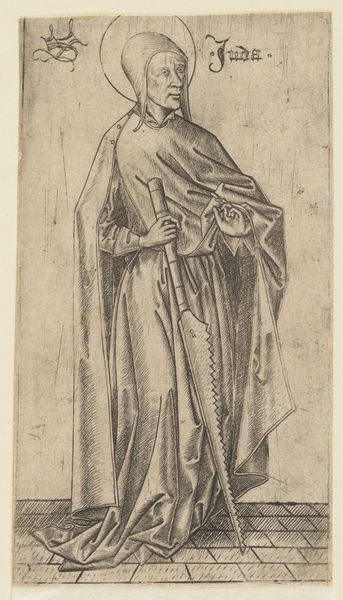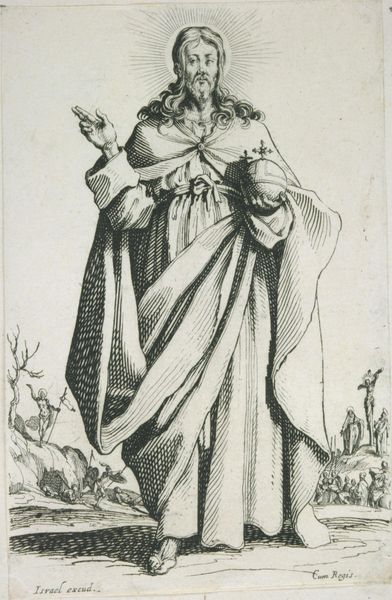
Mary, Queen of Scots with the scene of her execution (from "La Gallerie des Femmes Fortes," page 350) 1647
0:00
0:00
drawing, print, engraving
#
portrait
#
drawing
#
baroque
# print
#
portrait reference
#
france
#
men
#
portrait drawing
#
history-painting
#
engraving
Dimensions: Sheet: 13 1/2 × 8 7/16 in. (34.3 × 21.4 cm)
Copyright: Public Domain
Curator: Here we have an engraving from 1647, depicting Mary, Queen of Scots, alongside a scene of her execution. It's from "La Gallerie des Femmes Fortes," created by Gilles Rousselet. Editor: Goodness, what a potent combination of solemnity and drama. She looks resigned but dignified, juxtaposed with that shockingly busy execution scene. Curator: Rousselet was aiming for more than just a portrait, I think. Look at the details in her gown, rendered with such precise lines—but then shift your focus to the lower left, the public witnessing the brutal act. It’s a story in textures, contrasting finery with the stark reality of death. Editor: I see your point. And considering it's a print, mass-produced and circulated, that depiction of her execution really serves a purpose. It isn't just about remembering Mary, but framing her execution itself. What sort of printing process was common then that helped disseminate an image like this so efficiently? Curator: The engraving allowed for multiple impressions, making this image readily available. It facilitated the construction of her image, as you hinted, within a wider socio-political landscape. How do you feel this choice of medium informs our understanding of her story and its retelling? Editor: Exactly! Engraving flattens it, turns her suffering into something reproducible and consumable. Even the very line and burr of the copper plates play a role, hardening her story, mass-producing a Catholic martyr image during France's own internal religious conflicts. It shifts away from the queen herself to making meaning of her. It's about using an industrial medium for myth-making, I think. Curator: The texture created really adds a compelling visual layer to that process of image and martyr making, and one can really reflect on it through a contemporary context of the time. Well, this image leaves us with plenty to contemplate regarding history, and even artistic process itself. Editor: Absolutely, an exercise in understanding not just *who* she was, but *how* she was—and still *is*—made and remembered.
Comments
No comments
Be the first to comment and join the conversation on the ultimate creative platform.

